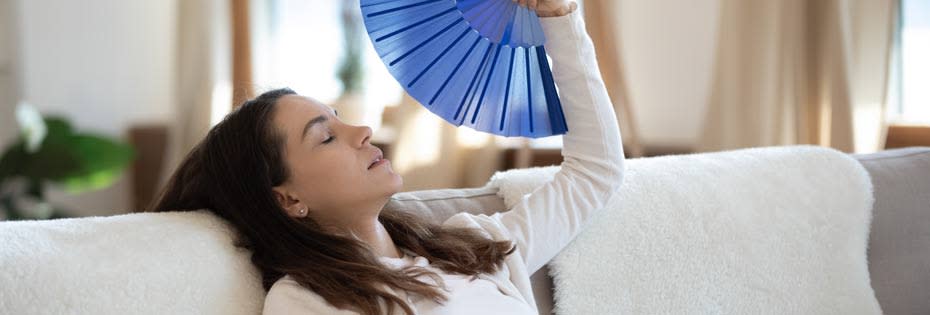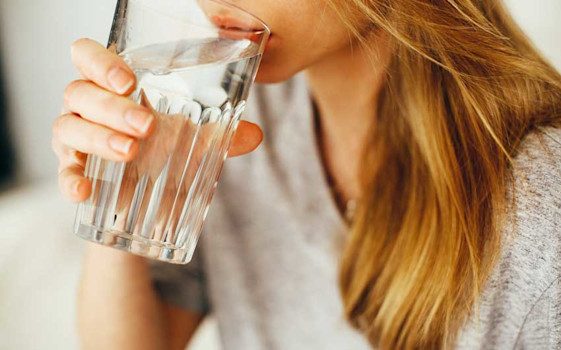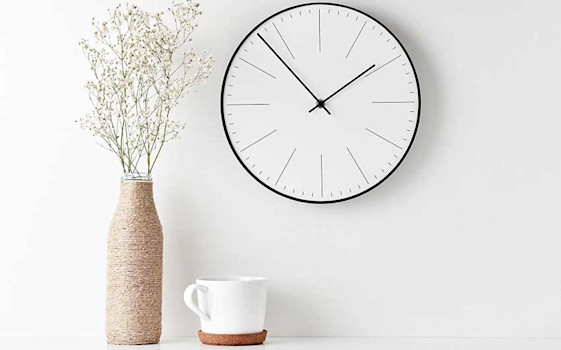7 Top Tips for Cooling Hot Flushes

Author Pat Duckworth MBA, NLP (Master Prac)Last updated 06 July 2020
- Health Conditions
7 Top Tips for Cooling Hot Flushes
Hot flushes are one of the most common symptoms that send women to see their doctors when they are going through the perimenopause. Up to 85% of women experience hot flushes and/or night sweats and of those, 70% experience them for a year and 30% for about 5 years1.
Hot flushes are the result of the reduction in the levels of the reproductive hormones, oestrogen and progesterone prior to menopause. The intensity and duration of hot flushes varies from woman to woman.
During a hot flush the blood vessels dilate, increasing the flow of blood to the skin, causing redness to the face, neck and chest. A rise in temperature is accompanied by sensations of heat, followed by sweating and cooling down. Some women also experience increased heart rate, dizziness, faintness and nausea.
For women in the workplace, hot flushes can be a challenging issue. They can make it difficult to wear some items of uniform or to work in premises where you have no control over the heating and ventilation. For many women, hot flushes are triggered by stressful situations such as giving a presentation, or meeting a new client. The embarrassment associated with the visible redness and sweating can lead to loss of confidence.
Night sweats disrupt sleep. Regular poor quality sleep leads to daytime drowsiness, brain fog, poor memory and low mood. All of these cognitive symptoms have a negative effect on performance in the workplace.
But don’t despair! There are lots of simple steps that you can take to reduce the frequency and intensity of hot flushes.
- Stay hydrated

Staying well hydrated is essential for your physical and cognitive health. Your body is around 60% water and you need water to transport nutrients around your body and to eliminate toxins.
There is some debate about the right amount of water your body needs daily and it will depend on what you are eating and drinking and how much you are exercising. The usual recommendation is 2½ pints or 1.5 litres a day.
You can take in water from tea and coffee but the caffeine in those drinks also dehydrates your body and can trigger hot flushes. It is best to drink water and non-caffeinated herb and fruit teas.
Water-rich foods include iceberg lettuce, watermelon, broccoli, carrots, beets, oranges, apples, bananas and sweetcorn.
- Identify and Eliminate Food Triggers

Every woman’s experience of menopause is unique and the foods that trigger hot flushes will vary from person to person. There are some common triggers including:
- Hot food that raises the body’s base temperature such as soups, and stews.
- Spicy foods such as curries and chilli.
- Red meat including beef, pork and lamb.
- Caffeine: not just in coffee but also in tea, chocolate and energy drinks
- Sugar particularly white sugar and sugars in processed foods and drinks.
Once you have identified the foods that trigger your hot flushes, look at ways to reduce or eliminate them from your diet. Sometimes you can just make a simple substitution for example swapping your afternoon coffee for a fruit or herbal tea.
- Add foods that support your hormones
Phytoestrogens are oestrogen hormone-like compounds that can help to balance your hormones and reduce hot flushes and night sweats2. They are naturally occurring in some plants and readily absorbed in the digestive system. They include:
- Isoflavones – found in fermented soy (tofu, miso and tempeh), chickpeas, lentils and kidney beans.
- Lignans – found in flaxseeds (linseeds), sesame seeds, sunflower seeds, brown rice, oats, broccoli and carrots.
- Coumestans – found in split peas, pinto beans, lima beans, sprouted mung beans and Alfalfa beans.
- Reduce alcohol
Alcohol is not a woman’s best friend at menopause. It is both a stimulant and a depressant. It contains sugar which goes straight into the bloodstream having a disruptive effect on your blood sugar levels, causing hot flushes.
Alcohol has a diuretic effect and can lead to dehydration. It affects the functioning of the liver which is important during menopause because the liver controls the amount of oestrogen circulating in the blood system.
Some women believe that alcohol is a relaxant that helps them to sleep but drinking alcohol at night can have a disruptive effect on your natural sleep pattern. And it can trigger night sweats.
If you are experiencing frequent hot flushes and your sleep is being disrupted by night sweats, it’s time to cut down on your alcohol intake.
- Herbal remedies
Herbal remedies can be taken to help balance hormones at menopause. The most commonly used and researched are:
- Black Cohosh: commonly taken to improve: hot flushes, menstrual cramps, and postmenopausal vaginal dryness3.
- Red clover: can alleviate symptoms such as hot flushes, poor sleep, hair loss and dull skin4.
- Sage: used to treat Hot flushes and night sweats. Can also be taken as tea5.
- St John’s Wort: often used to treat mild depression, it has also been shown to help with hot flushes6.
- Dong Quai: a traditional Chinese medicine which has been used to treat hot flushes and night sweats7
If you are already taking medication for menopause or any medical condition you should talk to your doctor before taking a herbal remedy. Some herbal remedies are only suitable for short term use. If unsure, talk to your supplier or a herbal remedy practitioner.
- Manage your time

Using some basic time management techniques at home and at work can reduce your stress levels and hot flushes.
- Create a to-do list every evening for the following day. Enjoy the dopamine hit when you tick tasks off the list.
- Prioritise your to-do list to focus on the most important or urgent tasks.
- Review your normal daily and weekly tasks and stop doing anything that isn’t essential. This is your ‘to-don’t’ list!
- Relax
Research has shown that hypnotherapy coupled with visualisation is an effective and non-invasive technique for lessening hormone-related hot flushes. A study showed that hot flushes could be reduced by up to 68% in women who visualised cool places such as mountains, waterfalls and snow8.
You can use pre-recorded visualisations or practice using simple breathing exercises while you picture cool images.
Summary

Become more aware of your hot flush triggers by keeping a journal of when and where they occur. Then take one appropriate step from the tips above and notice what changes for you.
Pat Duckworth MBA, NLP (Master Prac)
Pat Duckworth is a Women’s Wellbeing Strategist, Author and International Public Speaker. She has published four books including the Award-winning ‘Hot Women, Cool Solutions: How to control menopause symptoms using mind/body techniques.’ Her fourth book, ‘Hot Women Rock: How to discover your midlife entrepreneurial mojo’, became a #1 International Bestseller. Pat advises organisations who are committed to supporting women colleagues at menopause on strategies for managing physical, mental and emotional symptoms.
Are you interested in learning more techniques to control menopause symptoms? Pat Duckworth's book 'Hot Women Cool Solutions: How To Control Menopause Symptoms Using Mind/Body Techniques' is available on Amazon.
References
- Foxcroft, L., ‘Hot Flushes, Cold Science’, (2009), Granta Publications
- Chen MN , Lin CC , Liu CF. Efficacy of phytoestrogens for menopausal symptoms: a meta-analysis and systematic review. Climacteric. 2015; 18(2):260–269.
- Low Dog, T., ‘Menopause: A Review of Botanical Dietary Supplements’, Am J Med, 118 (2005). Suppl 12B 98-108
- Andres S, Hansen U, Niemann B, Palavinskas R, Lampen A. Determination of the Isoflavone Composition and Estrogenic Activity of Commercial Dietary Supplements Based on Soy or Red Clover. Food Funct. 2015; 6(6):2017-2025.
- De Leo, V. et al., ‘Treatment of Neurovegetative Menopausal Symptoms with a Phytotherapeutic Agent’, Minerva Ginecol, 50 (1998), 207-11
- Al-Akoum, M. et al., ‘Effects of Hypericum Perforatum (St John’s Wort) on Hot Flushes and Quality of Life in Perimenopausal Women: A Randomised Pilot Trial’. Menopause, 16 (2009), 2, 307-314
- Kuperfersztain,, C. et al., ‘The Immediate Effect of Natural Plant Extract, Angelica Sinensis and Matricaria Chamomilla (Climex) for the Treatment of Hot Flushes During the Menopause: A Preliminary Repor t’, Clin Exp Obstet Gynecol, 30 (2003), 4, 203-6
- ScienceDaily, 'Cool' imagery lowers hot flashes through hypnotherapy. Science news. Baylor University.
